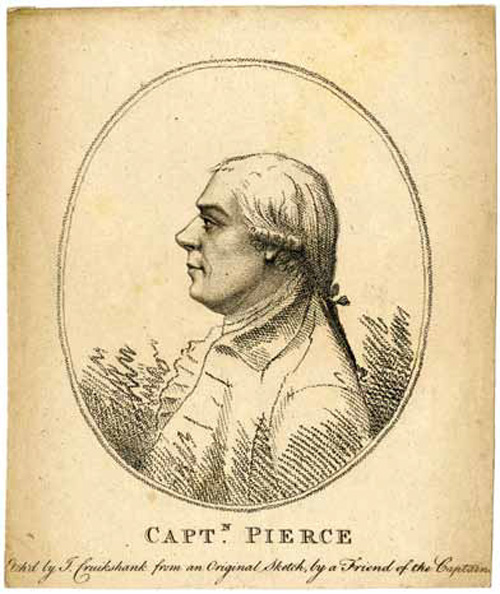The Unfortunate Captain Peirce
Historian article

An apprentice biographer researches the career of an eighteenth-century sea captain
On a cold January afternoon in 1986, my neighbour announced that he intended to go to Dorset's Purbeck coast that night. Puzzled, I asked why. He explained it was the 200th anniversary of the wreck of the East Indiaman, the Halsewell.
She had come to grief, around midnight, on the rocks between Seacombe and Winspit. He intended to mark the occasion with a clifftop vigil. I was intrigued - though not sufficiently to accompany him - and spent a few days investigating the event that had prompted this eccentric commemoration. I looked at artefacts from the wreck in Dorset County Museum but it was the contemporary newspaper accounts that really sparked my interest. Elsewhere, shipwrecks were not uncommon in the eighteenth century but the loss of the Halsewell, on an English shore, had made a huge impression on people. The event had been widely reported and had triggered a strong emotional and artistic reaction. The wreck was depicted in paintings and prints, poems were published, music performed and crowds flocked to the Eidophusikon, an early form of animation, to see the horrifying event play out before their eyes.
Two aspects to the shipwreck seem to have affected everyone, even the royal family. First, there was the gruesome fascination with the wreck: a large East Indiaman driven ashore, in a fierce blizzard, late at night, on to rocks beneath perpendicular cliffs. Then, the dramatic rescue by local quarrymen who lowered ropes to frozen seamen, sheltering in a cave, far below. When two surviving officers published their experiences in a factual ‘Narrative', the booklet quickly sold out and had to be reprinted many times...
This resource is FREE for Historian HA Members.
Non HA Members can get instant access for £2.49

